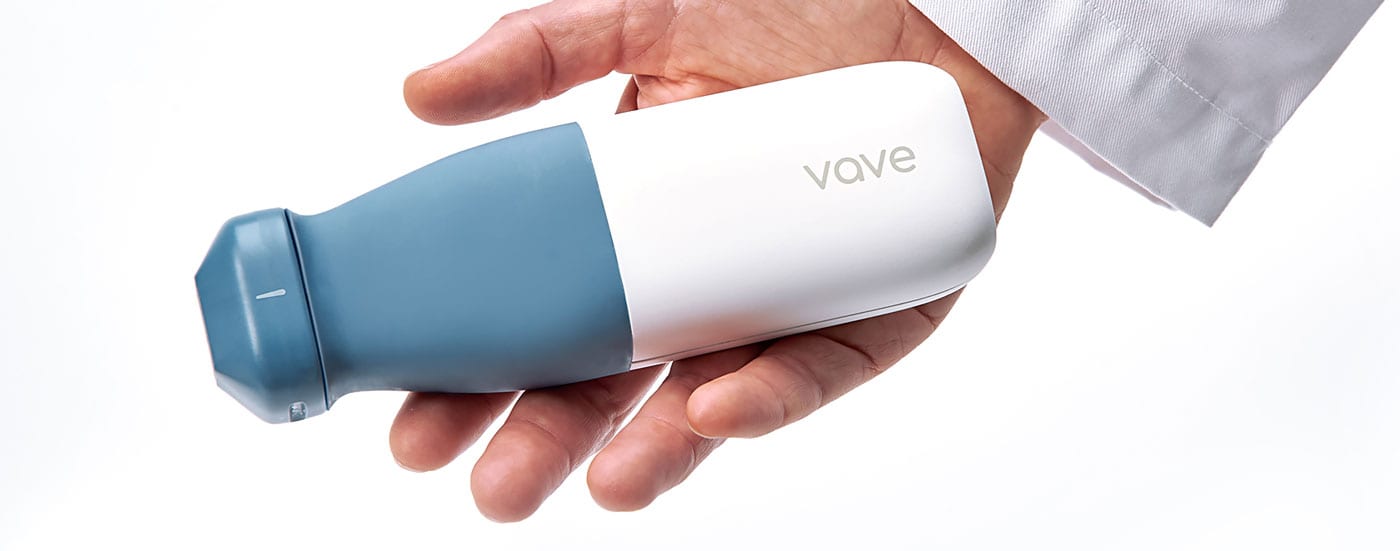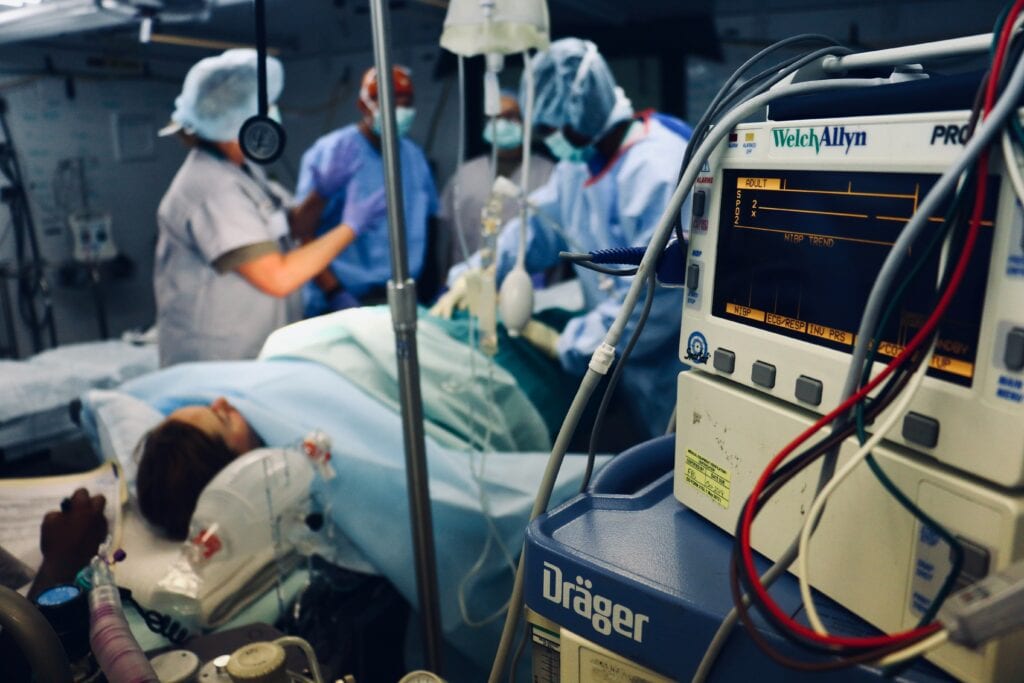In the early days of the Covid-19 pandemic, and upon its reach into the United States, an existing problem within the medical profession was amplified. Though medical advances are constant through the creation of new technology, some traditional medical exam instruments have proven to be less efficient than their counterparts. Add to that the specific problem of sourcing personal protection equipment (PPE), and it’s easy to see why traditional ultrasound machines––huge, heavy, difficult to sterilize after contact with multiple staff members––are falling out of favor.
However, Vave Health seeks to offer a solution to this concern.
It almost looks like a small infrared thermometer.
Consider the use of the stethoscope in health care: a medical professional uses this lightweight device to hear into the body of a patient, and examine their inner-processes and internal organs, in a process called auscultation. Blood flow, and thus, pulses, are usually the primary focus of this, which serves to check that the heart is beating at a regular and proper rhythm. The same device can also check for arterial blockages, blood pressure, and tumors.
Auscultation ultimately lacks accuracy and is reliant on the acute hearing of the caregiver. The presence of an echo can be hard to detect when listening to a heartbeat, and blockages in blood vessels may be too small to hear. The medical profession is now considering––perhaps somewhat ironically––using sound waves, rather than listening to blood vessels, to detect problems. The use of projecting high-frequency sound waves and looking at the images created by the echo reflecting off internal tissue, is known as sonography, ultrasonography, and––most colloquially ––ultrasound.
Diagnostic medical sonography — how formal!
To the majority of the population, ultrasound examinations are usually reserved for pregnancy scans, in order to determine the healthy development––and sometimes gender––of a growing fetus within the mother’s uterus. Ultrasound is considered safer than x-ray exams, which are also used to create an image of a subject’s internal organs, as sonography doesn’t expose them to ionized, and thus radioactive, rays. By applying conductive gel on to the patient’s skin, any air between the ultrasound appliance and the body is removed, keeping the imaging specific. The sound waves are projected and the echo from the patient’s internal organs, along with any abnormalities (or, in the case of pregnancy, a fetus), will show. The ultrasound itself is considered safe, as the frequencies used are not harmful to humans, even though they cannot be heard.
The Covid-19 pandemic has given medical personnel an opportunity to study point-of-care ultrasound (POCUS) and its practicality. By seeing what Covid-19 can do to a patient’s heart and lungs, they can better combat it. Also, due to the form of the handheld ultrasound probe, testing can take place from the bedside, thus diminishing the need for close contact between doctor and patient––something which will be good news to areas where PPE is in short supply.
Furthermore, ultrasounds can provide a better indication of patient outcomes from a particular treatment, or effects of an illness. As handheld ultrasound scanners do not require much power to create and project the higher-frequency sound waves, the growth in use of POCUS is becoming one of both necessity and convenience.
Probes that can fit in your pocket.
Another reason that some diagnostic tools are so widely used is in their practicality. Stethoscopes are almost a symbol of the medical profession as a whole––every professional, from medical students to retired family medicine doctors, all have them––and whilst a variety of handheld ultrasound probes are now available, the use of POCUS is still somewhat new.
This is quite surprising, as there are plenty of potential uses for the real-time assessments that miniaturized ultrasound technology brings––from standard care , to emergency medicine (for exams in both the Emergency department or by paramedics on-site), as well ultrasound for diagnoses of all ranges of illness. However, it can be argued that their use would be even more widespread if the device itself was more portable––a restraint which the innovators at Vave Health are looking to remove.

Real-time assessment of an ill patient.
Though it was a lack of PPE in critical care that forced clinicians to distance themselves as much as possible, POCUS’s accuracy, versatility, and practicality has meant that point-of-care ultrasound may be here to stay long after Covid-19 is gone. Vave’s recognition of this trend led to lowest cost in the industry offering. As a Vave owner there is one small upfront purchase and no hidden fese.
In addition, ultrasound imaging can be shared with other healthcare practitioners or medical students via VaveCast––Vave is leading the way for the portable ultrasound, and their timing couldn’t be better.

